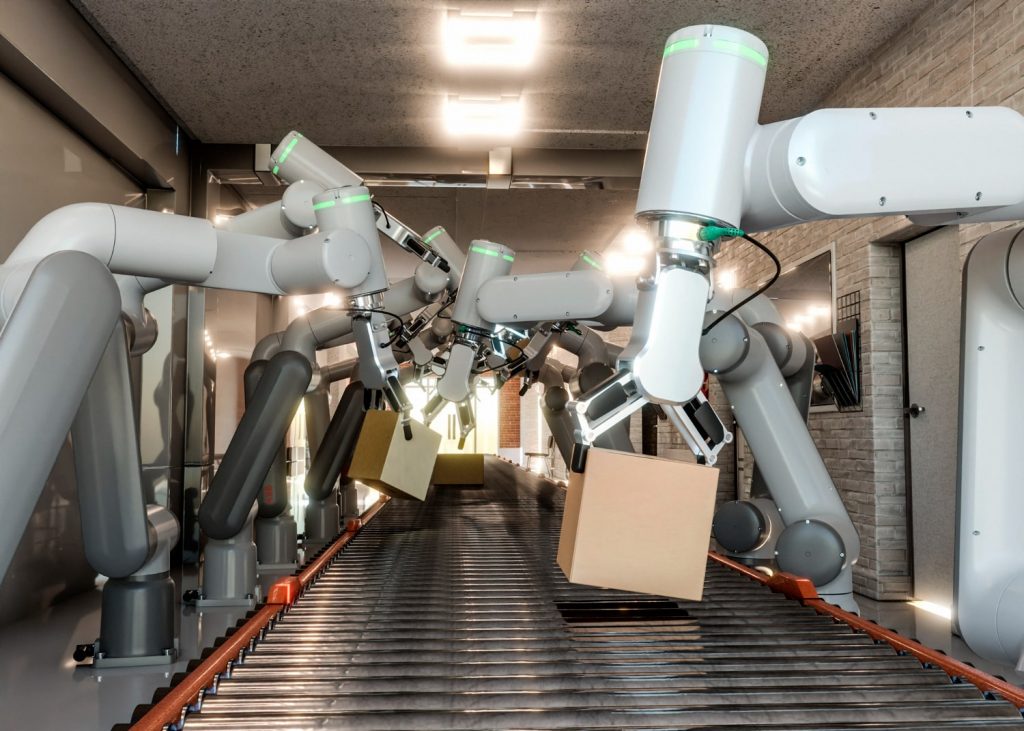In his Forbes article, our company’s founder Jayendran Balasubramanium points out how the “last decade has brought a lot of innovation into warehouse operations.” In the early days, good warehouses relied on human labor for picking and placing items. Manual order picking accounts for 50-55% of operational costs in warehouses. However, this is changing. Gradually, we those facilities shifted towards automation systems in the quest for speed, agility, efficiency, and effectiveness.
In the domain of order fulfillment, customer expectations keep growing. Delivery times are getting shorter. Fulfillment centers are being pushed to achieve these ambitious deadlines even as there is a serious shortage of human talent and resources.
This is now accelerating the adoption of robotics in order fulfillment and distribution. A recent survey found that 42% of warehouse and distribution centers plan to invest in automation – as compared to 35% in early 2017.
Here are 6 types of robots currently used in order fulfillment:
- Automated guided vehicles (AGVs)
Automated guided vehicles (or AGVs) can transport goods and materials within the warehouse center or MFC. By using installed sensors and lasers, AGVs follow a predetermined path to navigate within the facility. Advanced AGVs also use connected cameras and infrared technology to locate physical obstacles in their navigation path.
On the positive side, AGVs can easily replace manually operated forklifts or pickup carts to perform the same task with greater efficiency. On the flip side, AGVs require constant guidance from human operators. They can only operate along fixed routes and cannot adapt easily to sudden changes in the fulfillment facility.
- Autonomous mobile robots (AMRs)
Autonomous mobile robots (AMRs) are an improved version of AGVs, as they can independently navigate any facility without any human intervention. On their part, AMRs leverage AI and machine learning technologies to dynamically adjust to route changes. AMRs are used in applications like inventory items and different materials.
On the positive side, AMRs can detect unforeseen challenges like a falling object or heavy human presence in the facility. On the flip side, AMRs have the following limitations:
- Designed only for transporting lightweight objects of up to 1 ton.
- Delivers slower speeds (due to safety reasons) than a manual forklift.
- Collaborative robots
Collaborative robots (or cobots) are semi-automatic robots designed to work along with humans. Among its popular applications, cobots are useful in performing quality checks on finished products and for packaging them for delivery. Fitted with “smart” sensors, collaborative robots can easily differentiate between various objects (like boxes and obstacles).
Among its pros, cobots can accelerate order fulfillment by delivering the right products to workers in different locations. Among its limitations, cobots can only handle loads of up to about 55 lbs. They also have slower operating speeds as compared to larger robots used in industrial premises.
- Goods-to-Person (GTP) robots
Traditionally, manual pickup and placing of items are prone to human errors. Goods-to-Person (GTP) overcomes this limitation through automation. GTP robots deliver the right items to human pickers, thus reducing both pickup time and effort.
This robotic technology leverages an automated system to deliver the correct items to stationery pickup stations, where human operators can fulfill the order. Among its benefits, GTP robots do not require any major changes to the existing fulfillment infrastructure or any major investments. On the flip side, GTP systems need regular maintenance to prevent any downtime.
- Automated Storage & Retrieval Systems (AS/RS)
Automated storage and retrieval systems are computer-controlled robots that can automatically store or retrieve selected items from a warehouse storage facility. Designed for speed and efficiency, this type of robot is particularly useful in applications like inventory management and materials handling. By integrating AS/RS robots with warehouse management, companies can also identify the exact inventory item to be picked or retrieved.
Among the pros of AS/RS robots can easily traverse complex product aisles as well as vertical distances to store or retrieve any product. On the other side, these systems have multiple limitations including:
- Heavy initial investments
- High maintenance costs
- Technical skills and training requirements
- Palletizing robots
Fitted with robotic arms, palletizing robots are generally more flexible for handling a variety of tasks including palletizing and depalletizing. These robots are skilled at lifting and positioning items of different sizes and weights. Typically, they are used in warehouse applications like:
- Picking and packaging items.
- Receiving and storing items.
- Palletizing items.
Among the benefits, palletizing robots can easily replace humans for tasks like packaging, picking, and order preparation. On the flip side, palletizing robots are expensive to buy and maintain in the long run.
Addressing Robotic challenges using Carte+
At Cartesian Kinetics, we believe that efficient order fulfillment will drive the next growth phase for online retailers. Our in-house robotic solution Carte+ is designed to operate in small facility spaces including dark stores and local outlets.
Here’s what sets Carte+ apart from other robotic solutions:
- Impressive throughput of over 450 totes per hour
- Faster installation (without any heavy material handling) in under 6 weeks
- Ideal for urban facilities with limited floor space
- Accelerated ROI of under 2 years
Do you want to know how Carte+ can make a difference? Reach out to us today!


